War and Peace
Remembering our historic first night at Sydney Opera House

In 1973, the attention of the world turned to Sydney. After 17 years and plenty of agony, the defining building of the century was finally completed. The Sydney Opera House is an architectural icon in the truest sense of the word, and we're proud to call it our home in the harbour city.
On Friday 28 September 1973, we christened the Opera Theatre (now named the Joan Sutherland Theatre) with the first public performance. The Sydney Opera House was officially opened a few weeks later on 20 October 1973 by Queen Elizabeth II.
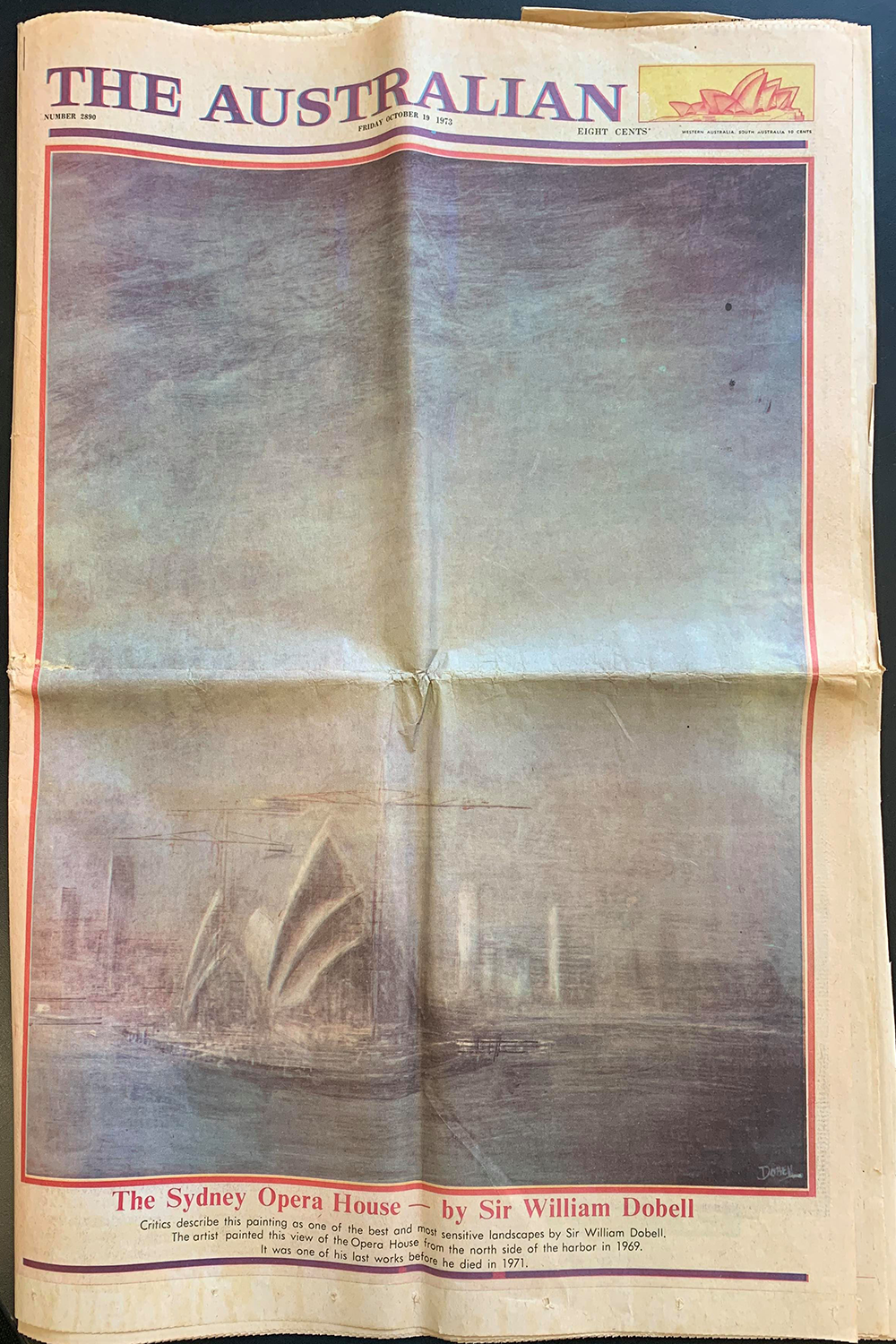
The Australian's commemorative 20-page supplement celebrating the opening of the Sydney Opera House. The cover features a painting by Sir William Dobell, painted in 1969. It was one of his final works before his death in 1970.
The Australian's commemorative 20-page supplement celebrating the opening of the Sydney Opera House. The cover features a painting by Sir William Dobell, painted in 1969. It was one of his final works before his death in 1970.
Choosing the perfect opera
Our team had been waiting for well over a decade to move into the Sydney Opera House, and finding the right piece for opening night was a fraught task. The expectation was that we'd perform one of the most popular works in the canon, but our musical director at the time, Edward 'Ted' Downes, had another idea.
Six years earlier, Downes had conducted a concert performance of Prokofiev's operatic adaptation of Leo Tolstoy's epic novel, War and Peace, in Leeds, before conducting the British premiere performance in 1972 at Sadlers Wells. The opera follows five aristocratic Russian families living through the French invasion of Russia across 13 scenes; the first seven are set during peace time and the last six during war.
Downes' choice seemed to fit the bill: it was an Australian premiere, its surprise factor attracted plenty of international attention and, crucially, it featured plenty of roles, allowing many of the company's treasured singers to take part in the historic first performance.
Photo: Eilene Hannan as Natasha and Elizabeth Connell as Princess Maria Bolkonskaya in our 1973 production of War and Peace. Photo: John Walsh.

The creative team
Multiple high profile directors were approached for the project, which eventually fell to American actor and director Sam Wanamaker, who Downes had previously collaborated with at the Royal Opera House, Covent Garden. Wanamaker is known for his many film roles, but became a pivotal figure in British theatre, key to the recreation of Shakespeare's Globe in London.
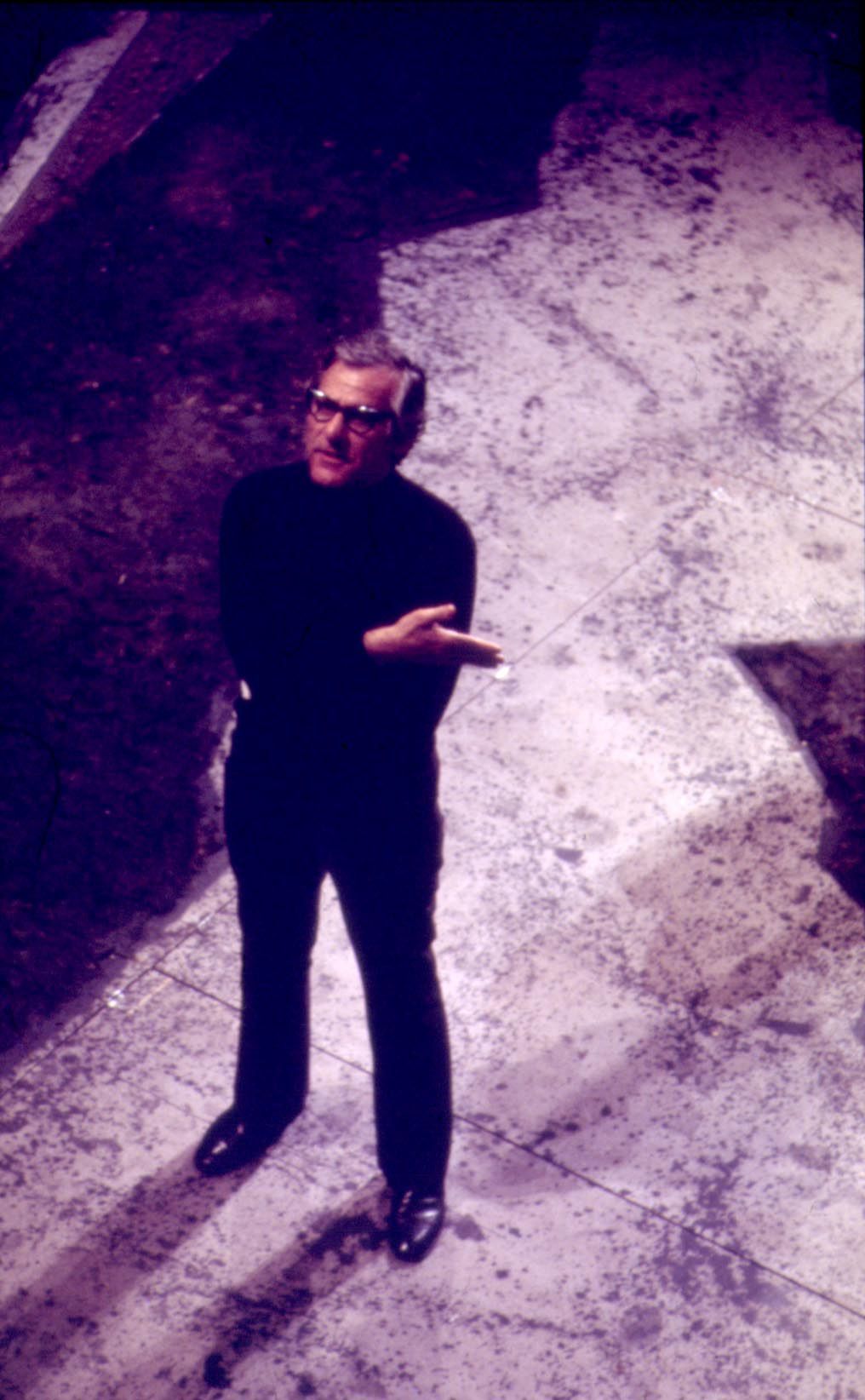
Director Sam Wanamaker on the set of our 1973 production of War and Peace. Photo: Opera Australia archives.
Director Sam Wanamaker on the set of our 1973 production of War and Peace. Photo: Opera Australia archives.
British-born designer Tom Lingwood, who had designed multiple productions for the company over the previous three years, was given the task of conjuring up early 19th century Russia on the stage of the Opera Theatre. Lingwood used much of the new machinery available in the theatre, including a revolve, built into the floor of the stage.
Downes conducted the performance and was also responsible for the English translation sung by our cast.
Opening night
Wanamaker assembled an enormous cast for the event: the chorus increased in size from 36 to 50, and there were 41 principal singers, including Eilene Hannan as Natasha, Tom McDonnell as Andrei and Raymond Myers as Napoleon. At the time, this was the biggest cast we'd brought together for a production. Some singers in the company, including John Shaw and Neil Warren-Smith, were part of our first-ever tour, back in 1956.
The production was filmed by the BBC and broadcast around the world (although in truth, the performance seen in the UK was not the opening night but the final rehearsal in front of the cast's family and friends; this was so that the performance could be screened on the official "opening night" in the UK).
Photo: 'War' in our 1973 production of War and Peace. Photo: John Walsh.
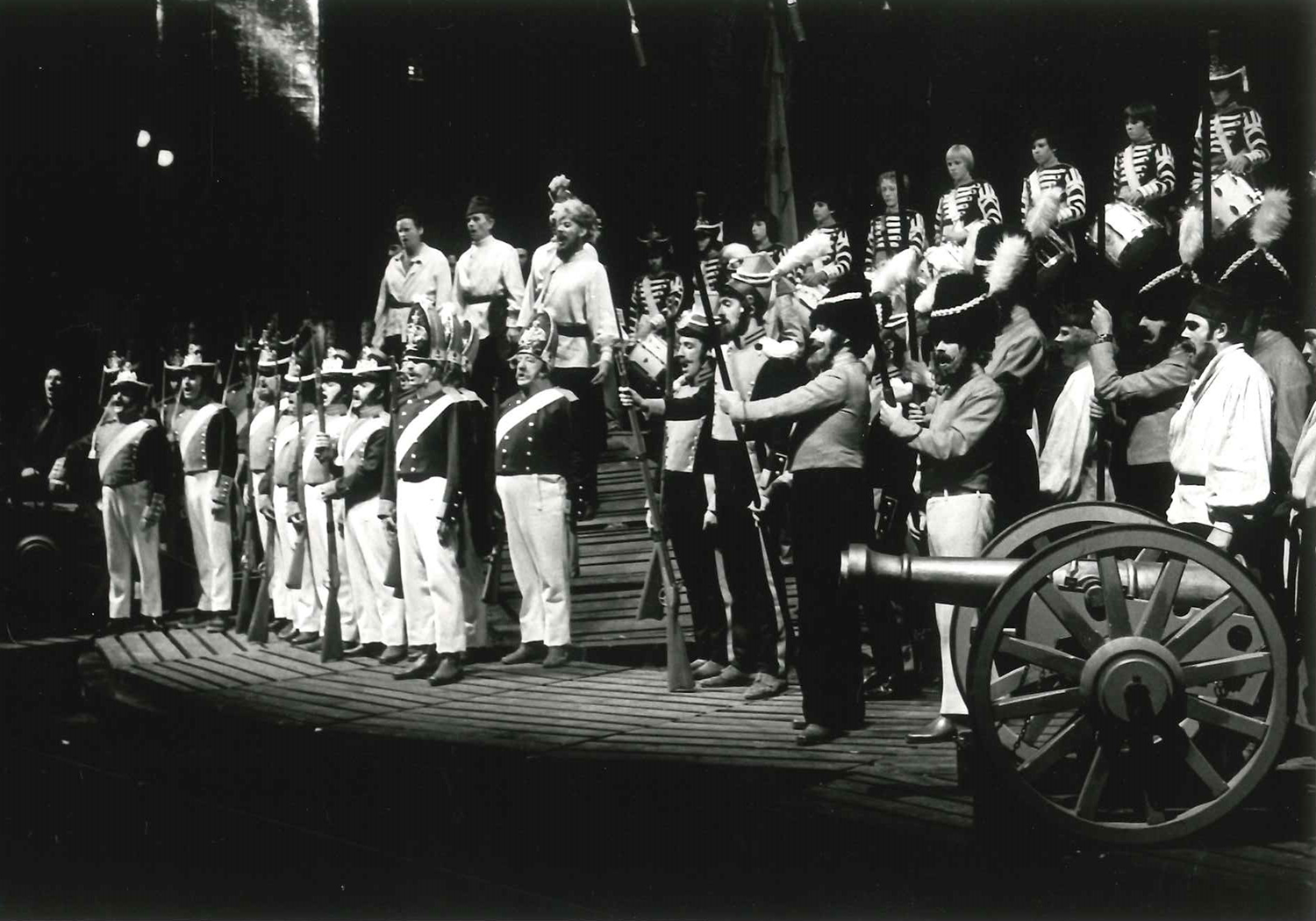
An unexpected audience member
The Sydney Opera House sits on Bennelong Point, at the edge of Sydney Harbour, next to the Royal Botanic Gardens. It's an area of extraordinary natural beauty, but it's not all that often that nature finds its way into the theatres.
At the final rehearsal of War and Peace (and the first time an audience was in the theatre) a brush-tailed possum made a surprise appearance at the end of the first act. It scuttled down from the top of the theatre, and ran across the small railing that separates the first row of the audience from the orchestra pit. Apparently it stopped about a metre from the conductor, who didn't even notice that he was joined by an unwelcome performer.
Our artistic director at the time, John Winther, heard about the story and insisted that the possum become the company's new mascot. Director Moffatt Oxenbould says he was tasked with tracking down a stuffed possum from the National Parks and Wildlife Service. The company members weren't exactly thrilled with their new colleague, and it's no longer on display anywhere at Opera Australia.
Photo: 'Peace' in our 1973 production of War and Peace. Photo: John Walsh.
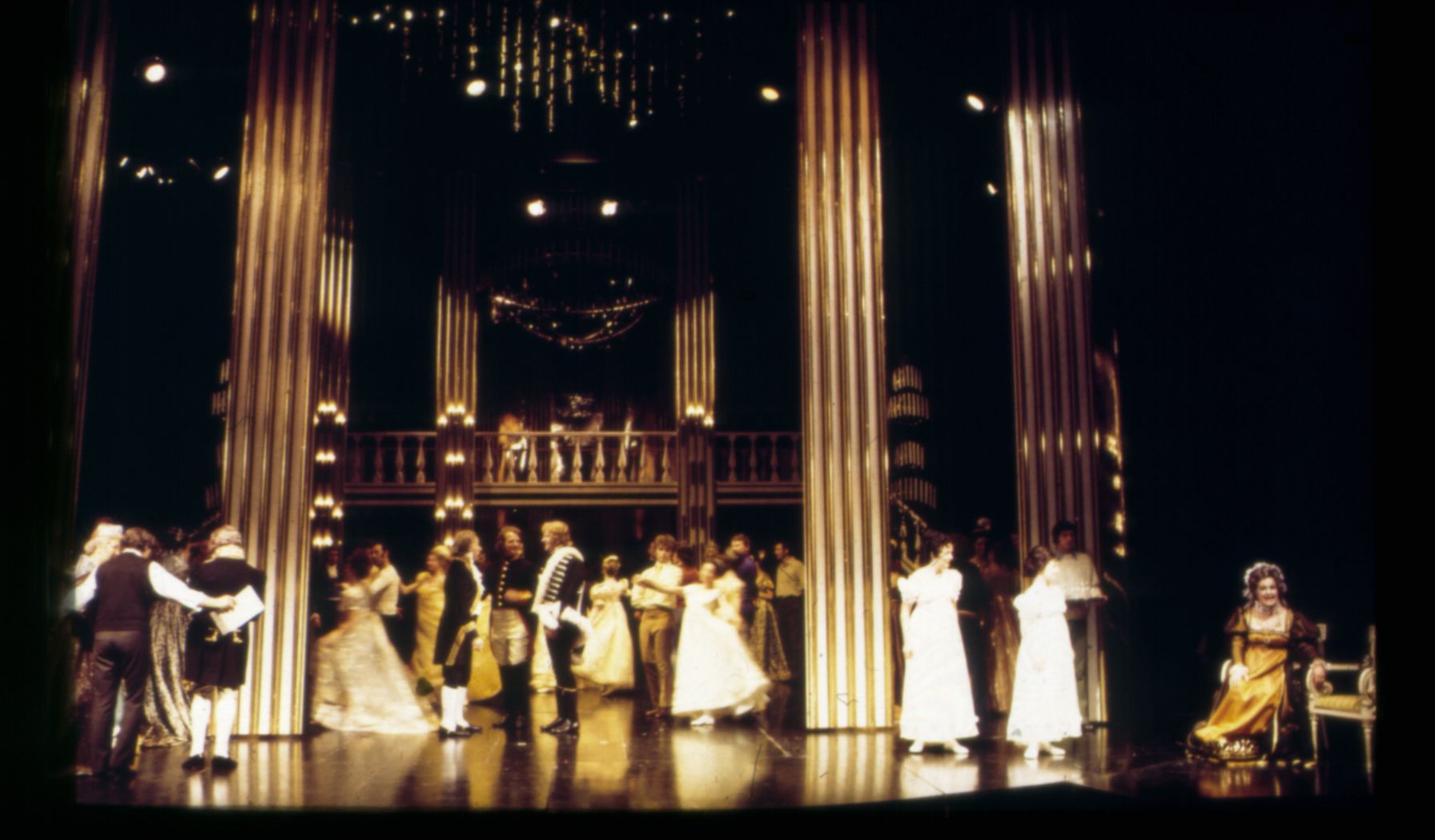
What the critics said
While the exterior of the Sydney Opera House had already been praised as an architectural marvel, there was plenty of consternation about whether the theatres would provide an equally spectacular experience. There was particular concern that the Opera Theatre would be too small to stage grand opera (a theatre for opera was originally to be built in the largest shell of the Opera House, but it was moved to the smaller shell when original architect Jørn Utzon left the project).

The Sydney Morning Herald review of War and Peace, 1973 and miscellaneous press clippings.
The Sydney Morning Herald review of War and Peace, 1973 and miscellaneous press clippings.
The critical consensus was that War and Peace showed that, with a little bit of ingenuity, the theatre could be a fabulous venue for grand opera.
They also all complimented the strength of the ensemble as a whole, but reserved special praise for company veteran Neil Warren-Smith, who delivered a towering performance as Kutuzov.
David Gyger wrote in the Daily Telegraph:
“It was hard not to be captivated by this War and Peace: Tom Lingwood’s designs, Sam Wanamaker’s production, Edward Downes’ conducting somehow managed to combine into a unity strangely evocative of the epic stature of the novel.”
Leading composer and music critic David Ahern declared:
“It was the Australian Opera which won the war at the Opera House on Friday night.”
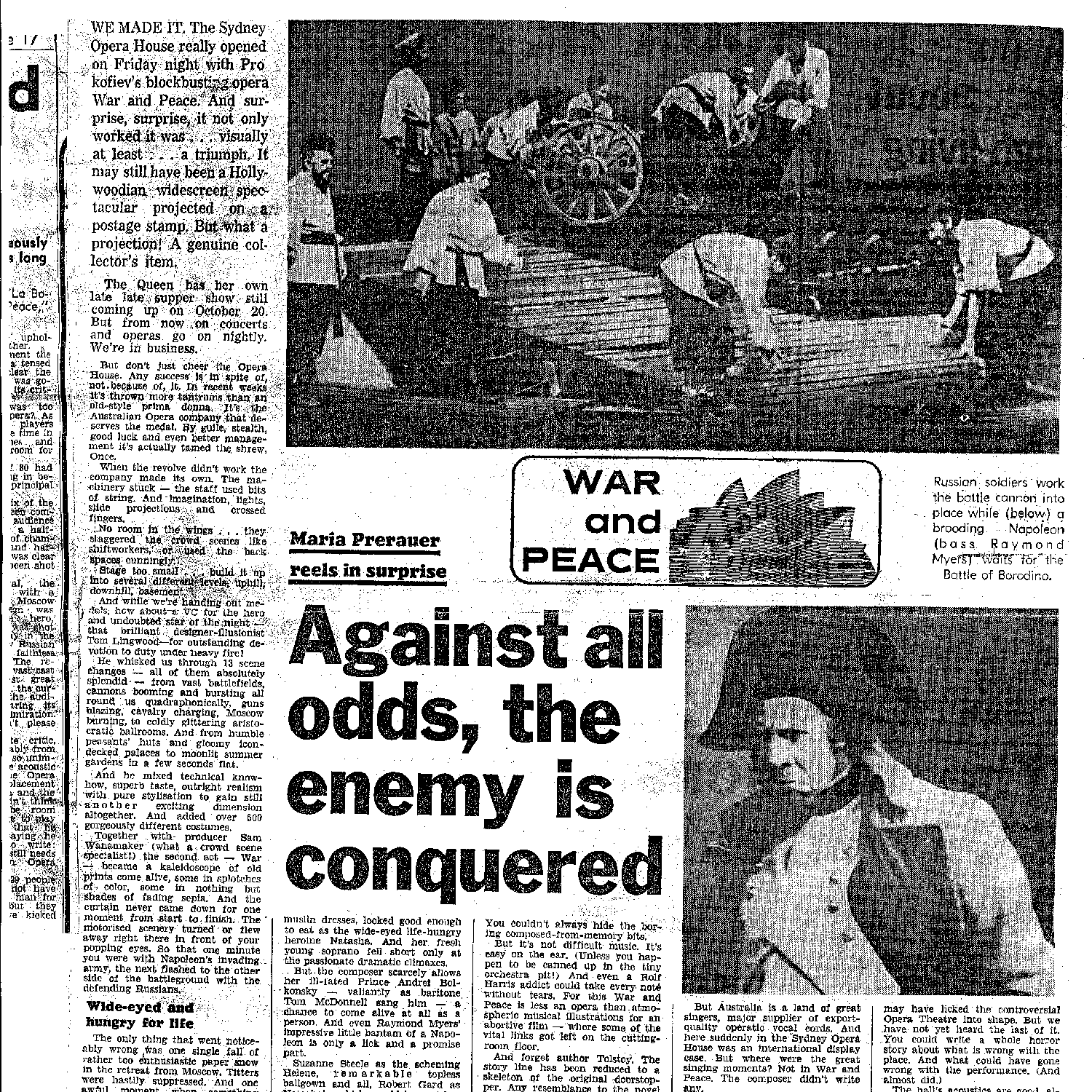
The Sunday Telegraph review of War and Peace, 1973.
The Sunday Telegraph review of War and Peace, 1973.

